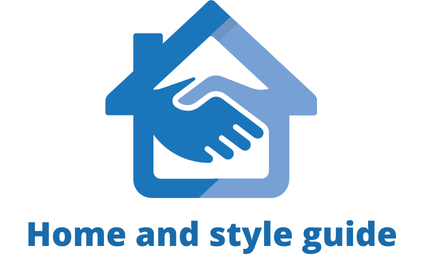The rising costs of energy have left many UK homeowners seeking effective solutions. Boosting your home’s thermal efficiency doesn't have to involve expensive renovations. Creative DIY window insulation can make a significant difference in your comfort and energy bills. With simple yet innovative techniques, you can keep the warmth in and the chill out. Discover how easy it is to enhance your home’s insulation while adding a personal touch. Simple changes can lead to substantial savings. Explore these effective tips to transform your living space today.
Understanding Thermal Efficiency
Thermal efficiency in homes refers to how well a building retains heat, minimising energy loss. It is a crucial factor in determining both energy efficiency and comfort levels within a residence. By optimising thermal efficiency, homeowners can significantly reduce their energy bills. This is because less energy is required to maintain a comfortable temperature, which translates into financial savings and a reduced carbon footprint.
Sujet a lire : How do you choose an ergonomic office chair for small spaces in UK homes?
The importance of thermal efficiency extends beyond just cost savings. A thermally efficient home ensures consistent indoor temperatures, enhancing comfort. This is particularly beneficial during extreme weather conditions, where maintaining a stable indoor climate is essential for wellbeing.
Common areas where heat loss occurs include:
A lire aussi : How can I improve my home’s air quality with plants that thrive in the UK climate?
- Windows and doors: Poorly insulated windows and doors can be major culprits of heat loss.
- Walls and roofs: Inadequate insulation in walls and roofs allows heat to escape easily.
- Floors: Uninsulated floors can lead to significant energy inefficiencies.
- Gaps and cracks: Small openings around fixtures or in the building structure can contribute to unwanted heat loss.
Improving home insulation in these areas is a practical solution to enhance thermal efficiency. By addressing these common sources of heat loss, homeowners can achieve a more energy-efficient and comfortable living environment.
Benefits of DIY Window Insulation
DIY window insulation can be a game-changer for homeowners looking to enhance their home's thermal efficiency. One of the primary benefits is the potential for cost savings. By reducing heat loss through windows, homeowners can significantly lower their energy bills. This reduction occurs because less energy is needed to maintain a comfortable indoor temperature, particularly during colder months.
In addition to financial advantages, DIY window insulation also improves comfort levels throughout the year. Properly insulated windows help maintain a consistent indoor climate, keeping homes warm in winter and cool in summer. This stability can greatly enhance the living experience, making it more enjoyable regardless of the season.
Furthermore, the environmental benefits of improved window insulation should not be overlooked. By decreasing the amount of energy required for heating and cooling, homeowners contribute to a reduced carbon footprint. This small step in enhancing insulation can have a significant impact on overall energy consumption, promoting a more sustainable lifestyle.
In summary, DIY window insulation offers a trifecta of benefits: cost savings, enhanced comfort, and positive environmental impact. By investing a little time and effort, homeowners can enjoy these advantages while contributing to a greener planet.
Essential Materials for DIY Window Insulation
When embarking on a DIY window insulation project, selecting the right insulation materials is crucial. It ensures both effectiveness and sustainability in improving thermal efficiency.
Common Insulation Materials
Several materials are popular for window insulation. Foam tape is an easy-to-use option that seals gaps effectively. Shrink film kits provide a clear barrier, reducing heat loss. Bubble wrap is a surprisingly effective insulator, trapping air and creating a thermal barrier.
Eco-Friendly Options
For those prioritising sustainability, eco-friendly options are available. Wool felt strips offer natural insulation properties and are biodegradable. Recycled cotton batts are another green alternative, providing excellent insulation while being environmentally conscious. These materials not only reduce energy consumption but also minimise environmental impact.
Sourcing Materials in the UK
Finding affordable DIY supplies in the UK is straightforward. Major home improvement stores like B&Q and Homebase offer a range of options. Online platforms such as Amazon or eBay also provide competitive prices and a variety of choices. Additionally, local eco-friendly shops may stock sustainable materials, supporting both the environment and local businesses.
By choosing the right materials, homeowners can enhance their window insulation effectively and sustainably.
Step-by-Step Guide to Window Insulation Techniques
Enhancing your home's thermal efficiency can be straightforward with these window insulation techniques. Here’s a detailed guide on how to insulate windows effectively using various methods.
Thermal Curtains
Thermal curtains are an excellent way to reduce heat loss. Begin by selecting curtains with a thermal lining. Measure your windows accurately to ensure full coverage. Install the curtain rod above the window frame for maximum insulation. Ensure the curtains touch the floor to prevent drafts.
Window Film
Applying window film is a simple DIY task. Clean the window surface thoroughly to remove dust and dirt. Cut the film to size, leaving an extra inch on each side. Spray the window with water and carefully apply the film, smoothing it out with a squeegee to eliminate air bubbles. Trim excess film for a neat finish.
Draft Stoppers
Draft stoppers can block cold air from entering through gaps. To make one, fill a fabric tube with rice or sand. Place it along the window sill. For added effectiveness, use adhesive draft strips around the window frame. This technique is cost-effective and easily adjustable for different seasons.
By following these DIY instructions, you can significantly improve your home's energy efficiency.
Innovative DIY Solutions for Window Insulation
Exploring creative DIY solutions for window insulation can lead to effective and unique home improvement strategies. These methods not only enhance thermal efficiency but also add a touch of innovation to your living space.
Bubble Wrap Insulation
One unique insulation idea is using bubble wrap. This material is not only affordable but also highly effective at reducing heat loss. Simply cut bubble wrap to the size of your window, spray the glass with water, and press the bubble wrap against it. The bubbles trap air, providing a layer of insulation that keeps your home warm.
Secondary Glazing
For those seeking a more substantial solution, secondary glazing offers excellent insulation benefits. This involves adding an extra layer of glazing using easy-to-find materials like acrylic sheets or clear plastic. Secure the sheet to the window frame with magnetic strips or double-sided tape for a removable, cost-effective insulation option.
Natural Insulation with Plants
Incorporating plants as natural insulators is another innovative approach. Large leafy plants placed near windows can act as a barrier, reducing drafts and enhancing air quality. This method not only insulates but also introduces greenery into your home, boosting both aesthetics and comfort.
Potential Costs and Savings from DIY Projects
Embarking on a DIY insulation project can be an effective way to enhance your home's thermal efficiency while keeping costs manageable. Understanding the potential cost analysis is crucial for budgeting effectively.
Breakdown of Costs
The initial costs for DIY window insulation vary based on materials and methods. Foam tape and bubble wrap are among the most affordable options, typically costing a few pounds per window. Shrink film kits are slightly more expensive but offer excellent insulation properties. Investing in thermal curtains can be a bit pricier but provides significant long-term benefits.
Long-Term Savings
While the upfront costs might seem daunting, the DIY savings on energy bills can be substantial. Proper insulation reduces heat loss, leading to lower heating expenses, especially during winter months. Homeowners often notice a marked decrease in energy bills soon after completing their insulation projects.
Return on Investment
The return on investment for DIY insulation is impressive. Most homeowners recoup their initial expenses within a year through energy savings. Beyond financial gains, improved insulation enhances comfort and contributes to a sustainable lifestyle. By carefully planning and budgeting for insulation, you can achieve significant savings and enjoy a more energy-efficient home.
Legal and Regulatory Considerations
When embarking on a home improvement project like window insulation, understanding UK building codes is crucial. These regulations ensure that any modifications meet safety and efficiency standards, protecting both the homeowner and the property.
UK Building Regulations Overview
In the UK, building regulations are designed to ensure that buildings are safe, healthy, and energy-efficient. For insulation projects, these regulations may dictate the types of materials used and the installation methods. Compliance with these codes not only enhances thermal efficiency but also safeguards against potential legal issues.
Permits and Approvals
Depending on the scope of the insulation project, you might need specific permits. For instance, significant alterations to the structure, such as installing secondary glazing, could require approval from local authorities. It's essential to check with your local council to determine if permits are necessary for your chosen method.
Importance of Compliance
Adhering to legal requirements is vital for ensuring the safety and longevity of your home improvements. Non-compliance can lead to fines or the need to undo completed work. Moreover, proper compliance can increase the value of your home, providing peace of mind and potential financial benefits.
Enhancing Your Insulation with Technology
Incorporating smart home technology can revolutionise how you manage your home's thermal efficiency. Smart thermostats are a prime example, offering precise temperature control and learning your preferences over time. This technology not only optimises heating schedules but also adapts to your lifestyle, ensuring comfort while minimising energy use. By maintaining consistent temperatures, smart thermostats can significantly enhance the effectiveness of your insulation efforts.
Another valuable tool is energy monitoring devices. These provide real-time data on your home's energy consumption, helping you identify areas where insulation might be lacking. By assessing this data, you can make informed decisions about where to focus your insulation improvements, ensuring maximum efficiency and cost savings.
Home automation systems further integrate technology with DIY insulation projects. By connecting smart thermostats and energy monitors to a central hub, you can automate heating and cooling adjustments based on real-time conditions. This seamless integration not only improves the efficiency of your insulation but also enhances overall home comfort. Embracing these technological advancements allows homeowners to create a more energy-efficient and comfortable living environment, aligning with modern sustainability goals.
Case Studies and Success Stories
Exploring DIY success stories offers valuable insights into improving thermal efficiency at home. These real-life examples highlight the tangible benefits of DIY insulation projects, demonstrating both financial and comfort gains.
One inspiring case study involves a family in Yorkshire who tackled their home's energy inefficiencies. By applying shrink film kits to their windows and installing thermal curtains, they reduced their energy bills by 25% in the first winter. Their experience underscores the effectiveness of simple, affordable solutions in enhancing thermal efficiency.
Another homeowner in London shared their journey of using bubble wrap insulation. Initially sceptical, they were amazed by the noticeable improvement in indoor temperature stability. This method not only cut down their heating costs but also provided a quick and easy DIY project that required minimal investment.
From these homeowner experiences, several key lessons emerge. First, starting with small, manageable projects can lead to significant savings. Secondly, combining different insulation techniques often yields the best results. Lastly, documenting the process helps track improvements and identify further opportunities for energy efficiency.
These case studies illustrate the transformative impact of DIY insulation, showing how thoughtful efforts can lead to substantial improvements in both comfort and cost savings.
Additional Resources and Support
For those embarking on DIY projects, having access to the right resources and support is invaluable. Fortunately, there are numerous DIY resources available to guide homeowners through their home improvement journeys.
Videos and Tutorials
Online platforms like YouTube host a wealth of helpful videos and tutorials tailored to DIY enthusiasts. Channels dedicated to home improvement provide step-by-step guides on everything from basic insulation techniques to advanced energy-saving strategies. These visual aids can be particularly beneficial for visual learners who thrive on seeing projects in action.
Community Support Groups and Forums
Engaging with community support groups and forums can offer additional guidance and encouragement. Websites such as Reddit and specialised DIY forums are bustling with experienced homeowners and professionals eager to share their knowledge. Here, you can ask questions, share your progress, and receive feedback from a supportive community.
Local Resources Directory
Accessing a directory of local resources can streamline the process of sourcing materials. Many UK regions have dedicated home improvement stores that offer a variety of insulation products. Additionally, local councils often provide guides and recommendations for environmentally-friendly practices, ensuring your projects are both effective and sustainable.
















